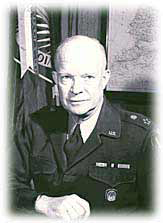Military
Mobilization
 1949
was a pivotal year and it must be described as a series of
events leading to test firing in Korea and then at its end
a major discontinuity in policy engagements due to a perceived
secure means of maintaining the Western military doctrine
of massive retaliation. The Korean War was supposed to be
a challenge to US resolve as well as a challenge to US military
logistics in Europe. A brief summary of events in Europe leading
up to the Korean conflict will now follow. 1949
was a pivotal year and it must be described as a series of
events leading to test firing in Korea and then at its end
a major discontinuity in policy engagements due to a perceived
secure means of maintaining the Western military doctrine
of massive retaliation. The Korean War was supposed to be
a challenge to US resolve as well as a challenge to US military
logistics in Europe. A brief summary of events in Europe leading
up to the Korean conflict will now follow.
When Roosevelt died in 1945 the alliance with Soviets dissolved
entirely. By 1947 the Soviets were ideologically defined as
the enemy of the Western powers. Some of the reasons for this
had to do with the system of negotiations it self as well
as the Soviet's themselves. The Soviet's refused to cooperate
in a US dominated economic system. According to the Soviets
America dominated world trade and as of 1945 it still had
an Atomic monopoly of which the Soviets viewed as a
means of diplomatic extortion. On the other side of the Iron
Curtain, Stalin had unified his country after a series of
bloody purges and had developed key foreign policy initiatives
that demanded increased Soviet spheres of influence throughout
the globe. The destruction of Germany and Japan created a
vacuum in which the soviets felt instinctively compelled to
fill by exerting influence in Greece and Indo China. Traditionally,
Japan and Germany had acted as counterweights to Soviet power
and now with their defeat the Soviets went on the offensive.
Thus, In 1949 Western European countries supported the implementation
of a multilateral
military alliance structure, dubbed NATO. NATO
was designed to repel an invasion of Europe from the USSR.
It has since evolved beyond traditional cold war containment,
towards regional peacekeeping and weapon's disarmament as
evinced by its intervention in Kosovo. However, its intial
purpose was solidified due to strategic paranoia because the
thought of massive soviet land armies overtaking the European
continent was an unsettling thought. US troops in Germany
established the notion of a trip wire on the border of East
and West Germany in which initially a force of 30,000 American
troops were pitted against a much larger soviet force. However,
if the Russians crossed this line that meant that nuclear
weapons would soon be raining down on Stalingrad and Moscow.
As such it was perceived that a nuclear war of which the Cold
War was a prelude to was to preclude a conflict with the US
and Soviets over Germany; Hence the notion of a tripwire.
After WWII, Germany was not only occupied but divided as well.
There was a fear of Soviet Expansion into Western Germany
since the East had already been conceded to the Soviets. Thus,
Western Germany also formally elected to cast its lot with
the West rejecting Stalin's call for unification.
A
series of power plays ensue with the Soviet's and Americans
over the Soviet's request
at the
Paris Conference in 1949, to have Allied troops
withdraw from Europe. The US refuses citing the size and close
proximity of Russian land armies to Western Europe. In September
Truman increases US commitments to Europe by increasing US
troop deployments to Europe. US policy makers realized that
in order for the rearamenment of Europe to occur first it
had to have an integrated stable economic system. This was
the purpose of the Marshall plan just as much as at was an
act of containment. After the intial 4 year phase of US Allied
occupation of Europe, the decision to rearm Western Europe
was lent credence by the formation of NATO in April 1949.
The US is named the head of the Alliance assuming the tactical decisions of the NATO military apparatus.
The
Chief source of NATO power was its ability to incorporate long-range
bombers able to strike anywhere and capable of delivering nuclear payloads in the event of
war with the Soviet Union. In December 1949, at the Brussels
Conference it was decided to rearm Western Europe and
by 1952 W. Germany was a full member of NATO, albeit under
the direction of the
European Defence Community. The US is also formally established
as the supreme authority of NATO. No doubt the soviets had
reason to be alarmed for a majority of three continents were
politically allied against the Soviets. The soviets were now
effectively sealed off from potential encroachments upon the
capitalist system. During the Korean War the Shuman
Plan provides for total integration of Western
Europe with the creation of the European
Coal and Steel Community as a supplement to the EDC.
***
.
go
to top of the page
chapter 4: Why Korea?
|